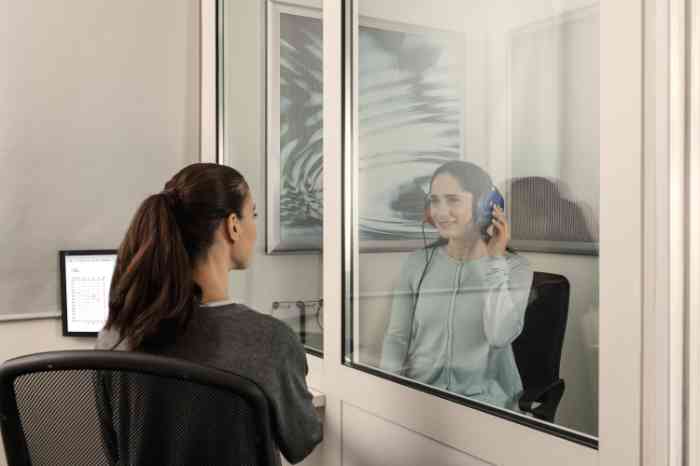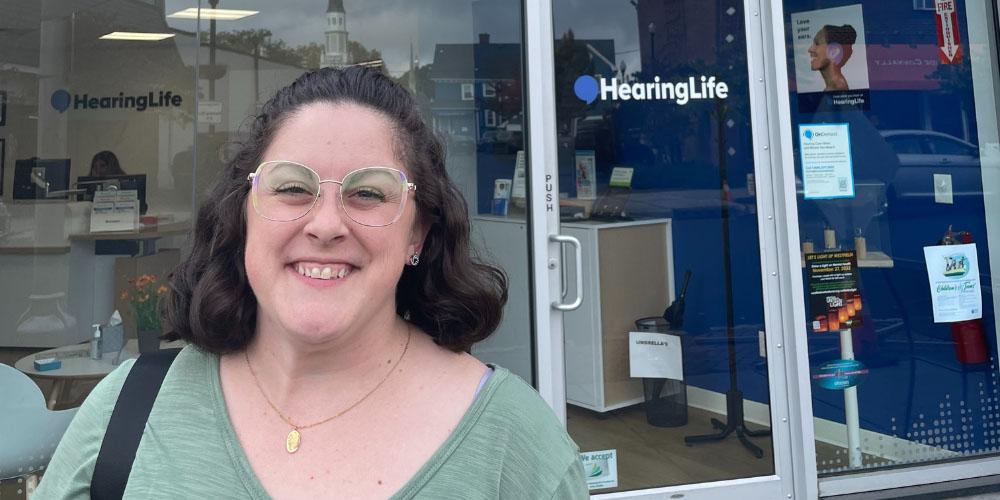
How to recognize musical ear syndrome?
Musical ear syndrome (MES) is a condition that causes patients, usually with some level of hearing impairment, to report hearing music when there is none.
Most individuals who are experiencing these auditory hallucinations are not diagnosed with any type of psychiatric condition like schizophrenia, so the origin of the musical hallucinations is largely unknown.
These hallucinations can range from radio songs, orchestra music, and popular music,1 to non-specific rhythms, tunes, harmonies, timbres, etc.2 At first, the patient experiencing the hallucinations might think that the music is coming from an external source, but eventually they discover that their minds were generating the sound.2 This experience can be disturbing for patients, but education about musical ear syndrome and its symptoms is usually helpful.
What's the difference between musical ear syndrome and tinnitus?
People with musical ear syndrome hear music while there is none. Patients with tinnitus hear ringing noises in their ears even though there is no external source causing the ringing. Tinnitus can also cause noises like clicking, hissing, buzzing, humming, or roaring in the ear.3
How common is musical ear syndrome?
A study done on a population with acquired hearing loss suggested that around 1% of that population had experienced musical hallucinations at some point, and this number might be too small as musical hallucinations are typically underreported. Another survey of patients completing hearing tests found that 3.6% of the cases has reported musical hallucinations.2
Risk factors for musical hallucinations
Aside from hearing loss, there are a few factors that increase your risk for musical hallucinations such as advanced age, tinnitus, and living alone. It is also appears more common among women than men, but women might be overrepresented in the sample sizes.2
Treatment for musical hallucinations
More research into potential treatments for musical hallucinations is still needed, but there are a few treatment methods that are being studied with some positive results. If the underlying cause of a patient’s musical ear syndrome is hearing loss, oftentimes a hearing aid is helpful in maximizing other sounds around the patient and minimizing musical hallucinations. Other treatments include enriching the patient’s own environment/home with sound to reduce the amount of sound being created by their brain.
If these auditory hallucinations are affecting a patient’s quality of life, being educated about musical ear syndrome has shown to decrease concerns about a patient’s own mental health. Lastly, some drugs have shown to be successful in treating musical hallucinations in some patients, in addition to cognitive behavioral therapy.1, 4
List of drugs that cause musical ear syndrome
Which drugs cause musical ear syndrome?
Musical Ear Syndrome (MES) is a form of auditory hallucination where individuals—often with hearing loss—hear music or singing that isn’t actually present. While the condition is primarily linked to hearing impairment, social isolation, and brain activity changes, certain medications may contribute by affecting the auditory or central nervous system.
Here’s a list of drug classes and specific medications that have been reported or suspected to be associated with musical ear syndrome or auditory hallucinations (including musical ones):
1. Antidepressants
- Amitriptyline
- Fluoxetine (Prozac)
- Sertraline (Zoloft)
- Venlafaxine (Effexor)
2. Antipsychotics
- Risperidone
- Olanzapine
- Quetiapine
(Note: These can both cause and treat auditory hallucinations depending on the context.)
3. Benzodiazepines & Sedatives
- Diazepam (Valium)
- Lorazepam (Ativan)
- Zolpidem (Ambien)
4. Antiepileptic Drugs
- Carbamazepine
- Topiramate
5. Opioids & Pain Medications
- Tramadol
- Oxycodone
- Morphine
6. Other
- Beta-blockers (e.g., propranolol)
- Corticosteroids (e.g., prednisone)
- Certain antibiotics (e.g., ciprofloxacin)
Important: MES caused by medication is relatively rare and may be dose-related or linked to interactions. Always consult with a healthcare provider or your physician before stopping or changing any prescribed medication.
Musical ear syndrome tests and evaluation
Musical Ear Syndrome (MES) is a type of auditory hallucination in which a person hears music, singing, or melodies that are not actually present. It most commonly occurs in individuals with hearing loss, especially older adults. Although MES is not a psychiatric disorder, it can be unsettling, and a proper evaluation is important to rule out other conditions.
There is no specific medical test for diagnosing Musical Ear Syndrome. Instead, diagnosis is based on a detailed clinical history and the exclusion of other causes. A healthcare provider will begin by reviewing your symptoms, hearing history, and any medications you’re taking. Some medications, neurological conditions, or psychiatric disorders can cause auditory hallucinations and must be considered.
Key tests may include:
- Hearing tests (audiometry): To confirm hearing loss, which is a major risk factor for MES.
- Neurological exam: To check for signs of conditions like epilepsy, stroke, or brain lesions.
- Imaging (MRI or CT scans): May be ordered if a structural or neurological cause is suspected.
- Psychiatric assessment: Conducted only if symptoms suggest a broader mental health condition.
If no medical or psychiatric cause is found and hearing loss is present, MES is the likely diagnosis. Treatment may involve addressing hearing loss or using sound therapy.
Can musical ear syndrome go away?
Yes, Musical Ear Syndrome (MES) can go away, but this varies from person to person. MES is a type of auditory hallucination where individuals—often with hearing loss—hear music, singing, or melodies that aren't really there. It's not a psychiatric disorder and is typically associated with sensory deprivation in the auditory system. In some cases, MES is temporary and resolves on its own, especially if it's triggered by stress, medication side effects, or temporary hearing changes such as ear infections or blockages. Once the trigger is removed or treated, the musical hallucinations may disappear.
However, in individuals with chronic hearing loss, MES may persist longer or recur. Treating the underlying hearing loss with hearing aids or cochlear implants has been shown to reduce or eliminate symptoms in many people. Others find relief through sound therapy, which introduces background noise to mask the hallucinations, or cognitive behavioral therapy (CBT) to help manage emotional responses.
While MES is not dangerous, persistent cases can cause anxiety or distress. If you experience musical hallucinations, it's important to consult a healthcare provider to rule out other conditions and explore treatment options. In many cases, with proper care, symptoms improve significantly—or even disappear.
How do you get rid of musical ear syndrome?
Musical Ear Syndrome (MES) doesn’t have a single cure, but symptoms can often be reduced or eliminated with the right approach. MES typically affects people with hearing loss and causes them to hear music, singing, or melodies that aren’t actually present. The condition is not psychiatric in nature but is thought to result from reduced sound input to the brain.
The most effective way to manage MES is by treating hearing loss. Many individuals experience significant relief after using hearing aids or cochlear implants, as restoring normal auditory input helps the brain stop generating phantom sounds.
Sound therapy can also help. Playing soft background noise—such as white noise, music, or nature sounds—can mask the hallucinations, especially in quiet environments where MES tends to be more noticeable.
It's also important to review medications with your doctor. Certain drugs, including sedatives and some antidepressants, may contribute to auditory hallucinations and could be adjusted if necessary.
For those feeling distressed by MES, Cognitive Behavioral Therapy (CBT) can be useful. In rare cases, medication may be prescribed to manage symptoms.
Finally, maintaining an active lifestyle, managing stress, and avoiding total silence can all support symptom relief. Always consult a healthcare provider to determine the best course of action.
Can musical ear syndrome happen without hearing loss?
Musical Ear Syndrome (MES) is most commonly associated with hearing loss, especially in older adults. When the brain receives reduced auditory input, it may “fill in the gaps" by generating music or melodies, similar to how visual hallucinations can occur in people with vision loss (Charles Bonnet syndrome).
However, MES can occasionally occur without diagnosed hearing loss, though this is less common. In these cases, other contributing factors may include:
- Mild or undetected hearing impairment, especially in higher frequencies
- Ear infections or temporary blockages (e.g. wax buildup)
- Neurological conditions (e.g. epilepsy, brain lesions)
- Medication side effects (e.g. some antidepressants or sedatives)
- Social isolation or sensory deprivation
- Extreme stress, fatigue, or sleep deprivation
Even if hearing seems normal, subtle changes in auditory processing or temporary disruptions can trigger MES. That’s why anyone experiencing musical hallucinations should consult a healthcare provider for a hearing test and neurological evaluation to rule out underlying causes.
In summary, while hearing loss is the most common trigger, MES can happen without it, though it warrants further investigation to ensure appropriate treatment and reassurance.
The above is the interpretation of Understanding Musical Ear Syndrome and Its Link to Hearing Loss provided by Chinese hearing aid supplier Shenrui Medical. Link https://www.srmcm.com/Blog/Understanding_Musical_Ear_Syndrome_and_Its_Link_to_Hearing_Loss.html of this article is welcome to share and forward. For more hearing aid related information, please visit Blog or take a look at our Hearing aids products















